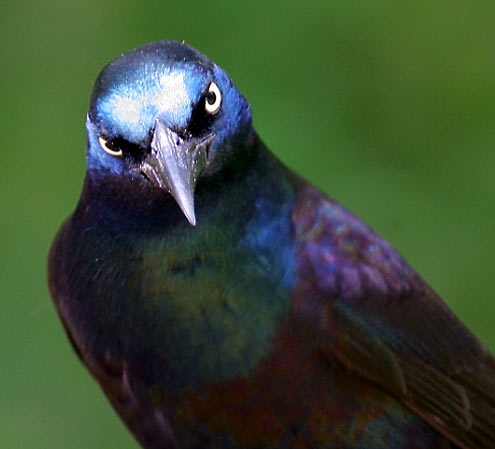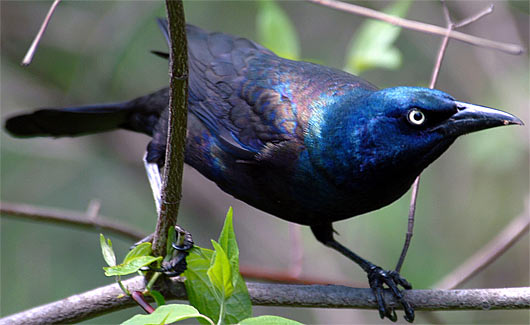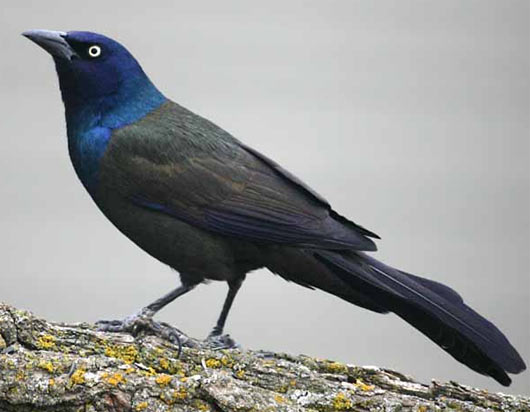Common Grackle – Clever, Intense Yellow Eyes

With a length of up to 13 inches (32 centimeters); a long dark bill; yellow eyes; a long tale; and black feathers with a purple, green, or blue iridescence on its head, the common grackle is a large icterid (small or medium-sized bird that’s only found in the western hemisphere). It is widespread but found mostly east of the Rocky Mountains (USA). It is a very clever bird, although it is a songbird, it does not sing and its voice is a bit squeaky. Since they have only a harsh song themselves, they sometimes mimic the sounds of other birds, and even attempt to mimic the sounds of humans. The bird is known to prance around in a proud and cocky manner, calculating its maneuvers with its intense yellow eyes.

The common grackle is known to breed in the semi-open and open areas of its regions, usually near water, setting up nests in well hidden cups in dense trees, cavities, and man-made structures. Unlike many other birds, it tends to permanently reside in its range, with only northern birds migrating.
The common grackle prefers to forage on the ground, in shrubs, and in shallow water; sometimes stealing food from other birds. It is omnivorous; it likes to eat insects, minnows, frogs, eggs, berries, seeds, grain, worms, small birds, and mice. Common grackles are known to eagerly wait by human eating areas, anticipating the dropping of food, and often fighting with each other over it. They also practice “anting”, which is accomplished when they rub insects on their feathers in order to apply liquids secreted by the insects (like formic acid) to themselves.

With an extremely high population, the common grackle often congregates in large groups in order to detect and defend against other birds and predators. These groups are referred to by farmers as “plagues” because of their effect on grain crops. Many actually consider the grackle to be a nuisance rather than a viable part of the ecosystem, and thus extermination efforts have taken place, dropping the population by over 60%. Despite these efforts, there’s still over 73 million common grackle in the United States today.

